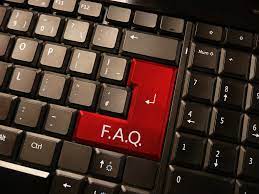Taking Charge: A Guide to DIY Credit Repair
DIY Credit Repair is an option for many, whose credit score feels like an enigmatic number dictating their financial opportunities. Leaving it as is , is not an option.
A low score can lead to higher interest rates, loan denials, and even trouble renting an apartment. While the allure of credit repair companies is strong, sometimes taking the reins yourself can be empowering and save money. This guide explores the world of DIY credit repair, outlining what it means, the process involved, and the tools you need to succeed.
Understanding the Basics:
What is Credit Repair?
Credit repair involves identifying and addressing inaccuracies or outdated information on your credit report, ultimately aiming to improve your credit score. This might involve disputing errors with credit reporting agencies, settling debts strategically, and utilizing positive credit-building techniques.
Why DIY?
Choosing DIY credit repair offers several advantages. It’s generally more affordable than professional services, empowers you to understand your credit, and fosters financial literacy. Furthermore, you maintain complete control over the process and avoid potential scams associated with some credit repair companies.
Before You Begin:
Know Your Rights:
The Fair Credit Reporting Act (FCRA) grants you numerous rights regarding your credit reports. You’re entitled to one free credit report annually from each major credit bureau (Experian, Equifax, and TransUnion). Review them meticulously, looking for errors like incorrect balances, duplicate accounts, or outdated information.
Prepare Your Toolkit:
Gather documentation like bills, receipts, and payment confirmations to support your disputes. Organize proof of any errors and maintain meticulous records throughout the process.
The DIY Credit Repair Process:
1. Pull Your Credit Reports:
Start by obtaining your free credit reports from each bureau. Remember, these reports might differ slightly.
2. Scrutinize for Errors:
Comb through each report line by line, searching for inaccuracies. Common errors include:
- Incorrect personal information: Names, addresses, or Social Security numbers.
- Duplicate accounts: Same account listed multiple times.
- Outdated information: Debts paid off long ago still reflected.
- Misreported balances: Inaccurate credit card or loan amounts.
3. File Dispute Letters:
For each identified error, prepare a dispute letter following the format outlined by the FCRA. Include your contact information, clear error details, and supporting documentation. Send certified mail copies to the credit bureau and creditor responsible for the error.
4. Track Your Progress:
Follow up with credit bureaus and creditors after submitting disputes. Monitor their responses and ensure they investigate claims thoroughly. Be persistent and document all communication.
5. Address Delinquent Accounts:
While disputing errors takes time, proactively address delinquent accounts. Consider debt consolidation or negotiate settlements with creditors, aiming for written agreements reflecting the updated status.
6. Build Positive Credit History:
While disputing errors, establish positive credit habits. Utilize secured credit cards responsibly, make timely payments, and maintain low credit card balances.
Tools & Resources:
- Federal Trade Commission (FTC): https://www.ftc.gov/news-events/topics/consumer-finance/credit-reporting
- AnnualCreditReport.com: https://www.annualcreditreport.com/index.action
- Consumer Financial Protection Bureau (CFPB): https://www.consumerfinance.gov/
- Sample Dispute Letters: https://files.consumerfinance.gov/f/documents/092016_cfpb__CreditReportingSampleLetter.pdf
Final Thoughts:
DIY credit repair requires dedication and patience. While it might seem daunting initially, the empowerment and potential financial benefits make it worthwhile. Remember, consistency and meticulous attention to detail are key. If you encounter complexities or feel overwhelmed, consider consulting a reputable credit counselor or non-profit credit repair organization for guidance. Remember, taking control of your credit is a step towards financial well-being and a brighter future.
Disclaimer: This information is for educational purposes only and does not constitute professional financial advice. Please consult with a qualified financial advisor for personalized guidance.
FAQs
Can I repair my credit myself?
To improve your credit, you can take reasonable actions on your own without having to hire a credit repair business. These actions include paying off debt, checking your credit reports for mistakes, and obtaining a credit card that notifies credit bureaus of on-time payments.
Can I repair credit without paying?
Credit repair businesses usually charge a set price for each item removed from your reports or a monthly fee for services completed in the preceding month. You can dispute information on your own, though, for free, as Experian does not charge customers or demand a specific form.
What is a ‘goodwill deletion’ ?
Have you forgotten to pay? If you want it taken off of credit reports, try writing a goodwill letter. A letter of goodwill requests that the creditor remove the late payment off your credit records and explains why it occurred.








